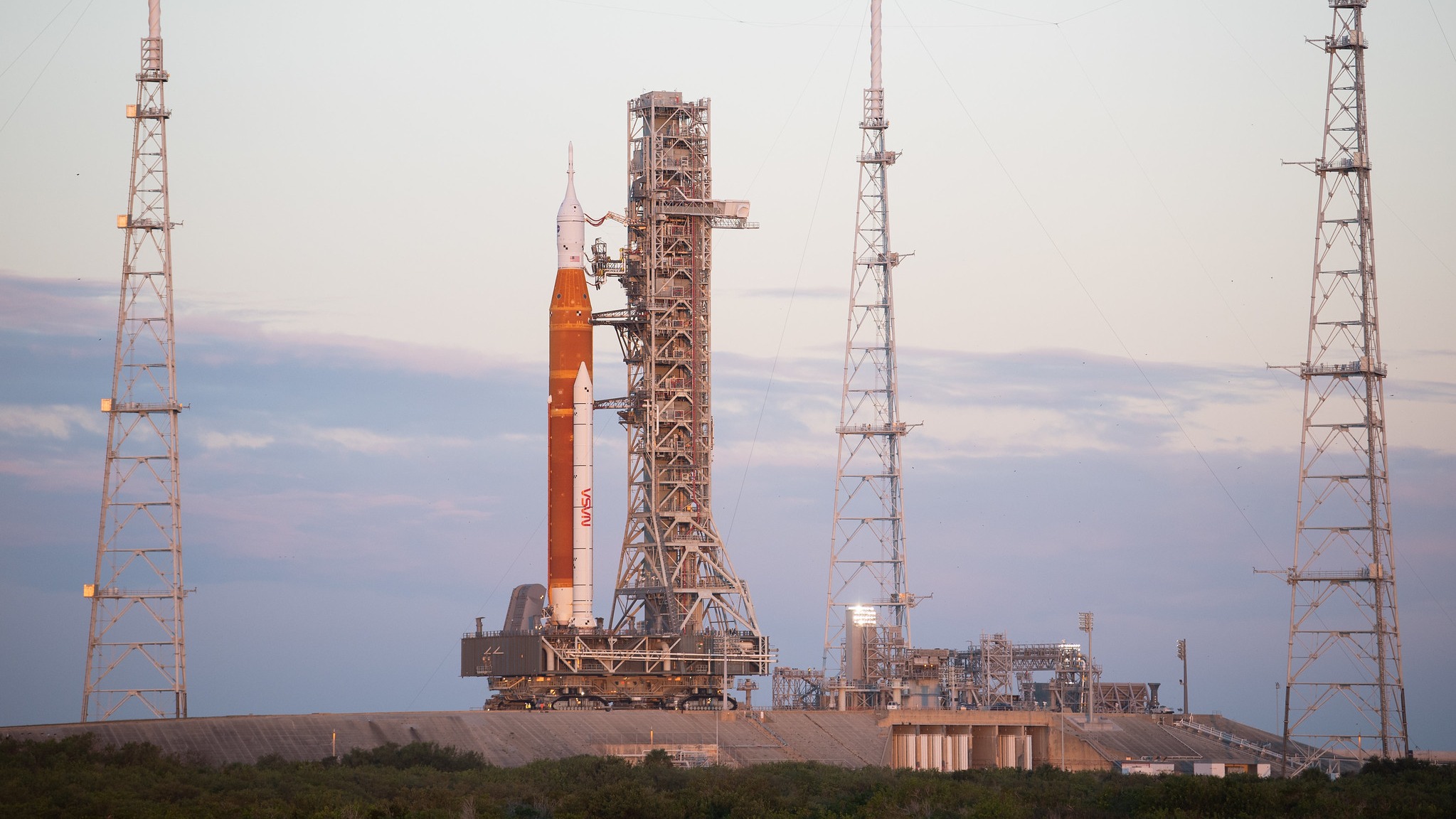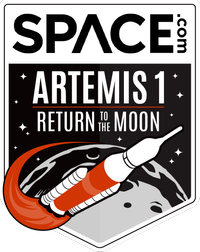NASA's Artemis 1 moon mission still on track for Nov. 16 launch after storm


NASA's Artemis 1 moon rocket survived Tropical Storm Nicole's wrath in good shape and remains on track to launch next Wednesday (Nov. 16) as planned, agency officials said.
Nicole slammed into Florida's Space Coast on Thursday (Nov. 10) as a Category 1 hurricane, lashing the region with strong winds and driving rain before weakening to a tropical storm. The Artemis 1 stack — a Space Launch System (SLS) megarocket topped by an Orion capsule — took the storm's punch, enduring it in the open at Pad 39B at NASA's Kennedy Space Center (KSC).
The SLS and its Orion spacecraft apparently have a strong jaw, for post-storm inspections have revealed only minor damage that shouldn't prevent an on-time liftoff, NASA officials said.
"Right now, there's nothing preventing us from getting to the 16th," Jim Free, associate administrator of the Exploration Systems Development Mission Directorate at NASA headquarters in Washington, said during a press conference Friday afternoon (Nov. 11). Liftoff is currently targeted for Nov. 16 at 1:04 a.m. EST (0604 GMT).
Related: NASA's Artemis 1 moon mission: Live updates
More: 10 wild facts about the Artemis 1 moon mission
Nicole pried loose some caulking on Orion, sent some water into the arm that allows access to the capsule from the Artemis 1 launch tower, and tore one of the SLS engines' rain covers, Free said.
The mission team is working its way through these and several other minor problems and anticipates clearing them in time for a Wednesday liftoff, he added.
Breaking space news, the latest updates on rocket launches, skywatching events and more!
This isn't to imply that Artemis 1 is guaranteed to get off the ground that day, however; other boxes must be checked as well.
For example, the mission team planned to power up both the SLS and Orion on Friday, Free said, and move on to "program-specific engineering tests" on mission hardware after that. Any hiccups in those procedures could potentially cause a delay.
Artemis 1 is no stranger to delays. The mission was supposed to launch in late August, but several technical glitches pushed the liftoff back a month.
Then, in late September, the team rolled Artemis 1 off Pad 39B and back to KSC's Vehicle Assembly Building (VAB) to shelter from Hurricane Ian, which hit the Space Coast hard.
Mission team members kept SLS and Orion in the VAB for a while, taking the time to perform some upgrade and maintenance work. They rolled Artemis 1 back out to the pad on Nov. 4, not long before Nicole boiled up in the Atlantic.
Early forecasts suggested the storm wouldn't present much of a problem for SLS and Orion. But Nicole strengthened surprisingly quickly, then set the Space Coast in its sights.
On Tuesday (Nov. 8), NASA pushed the planned Artemis 1 liftoff back two days, from Nov. 14 to Nov. 16. But by then, it was too late to roll Artemis 1 back to the VAB.
"We weren't going to have the favorable winds that we want when we roll," Free said.
Team members didn't think this decision put Artemis 1 in serious jeopardy; the models and forecasts suggested that SLS would be able to handle the strain that Nicole forced upon it. And that turned out to the case, Free said.
SLS is certified to withstand peak wind gusts of up to 85 mph (137 kph) at the 60-foot (18 meters) level "with structural margin," NASA officials have said. The maximum wind speed at that altitude that Nicole threw at the rocket on Thursday was 82 mph (132 kph), Free said.
Winds were more powerful at higher altitudes on Thursday, but they didn't exceed SLS' design limits, he added.
Artemis 1 is the first mission in NASA's Artemis program, which aims to establish a permanent human presence on and around the moon by the end of the decade. The flight will send an uncrewed Orion to lunar orbit and back, on a shakeout cruise designed to demonstrate that the capsule and SLS are ready for crewed missions.
The Nov. 16 launch window opens at 1:04 a.m. EDT (0604 GMT) and lasts for two hours. If Artemis 1 cannot get off the ground that day, backup opportunities are available on Nov. 19 and Nov. 25, Free said.
Mike Wall is the author of "Out There" (Grand Central Publishing, 2018; illustrated by Karl Tate), a book about the search for alien life. Follow him on Twitter @michaeldwall. Follow us on Twitter @Spacedotcom or on Facebook.

Michael Wall is a Senior Space Writer with Space.com and joined the team in 2010. He primarily covers exoplanets, spaceflight and military space, but has been known to dabble in the space art beat. His book about the search for alien life, "Out There," was published on Nov. 13, 2018. Before becoming a science writer, Michael worked as a herpetologist and wildlife biologist. He has a Ph.D. in evolutionary biology from the University of Sydney, Australia, a bachelor's degree from the University of Arizona, and a graduate certificate in science writing from the University of California, Santa Cruz. To find out what his latest project is, you can follow Michael on Twitter.
